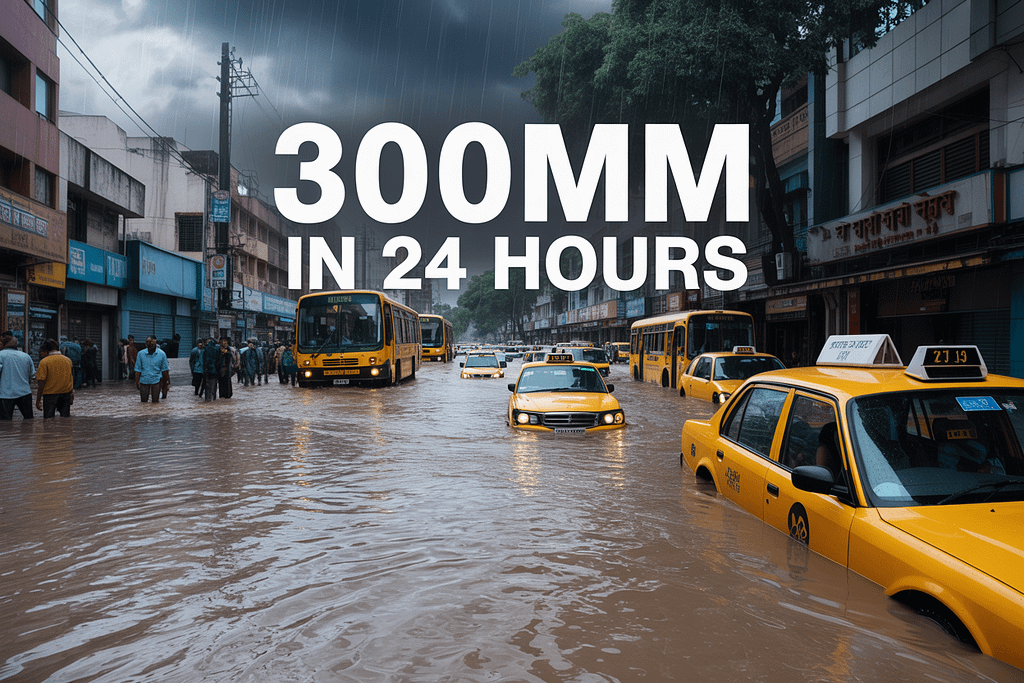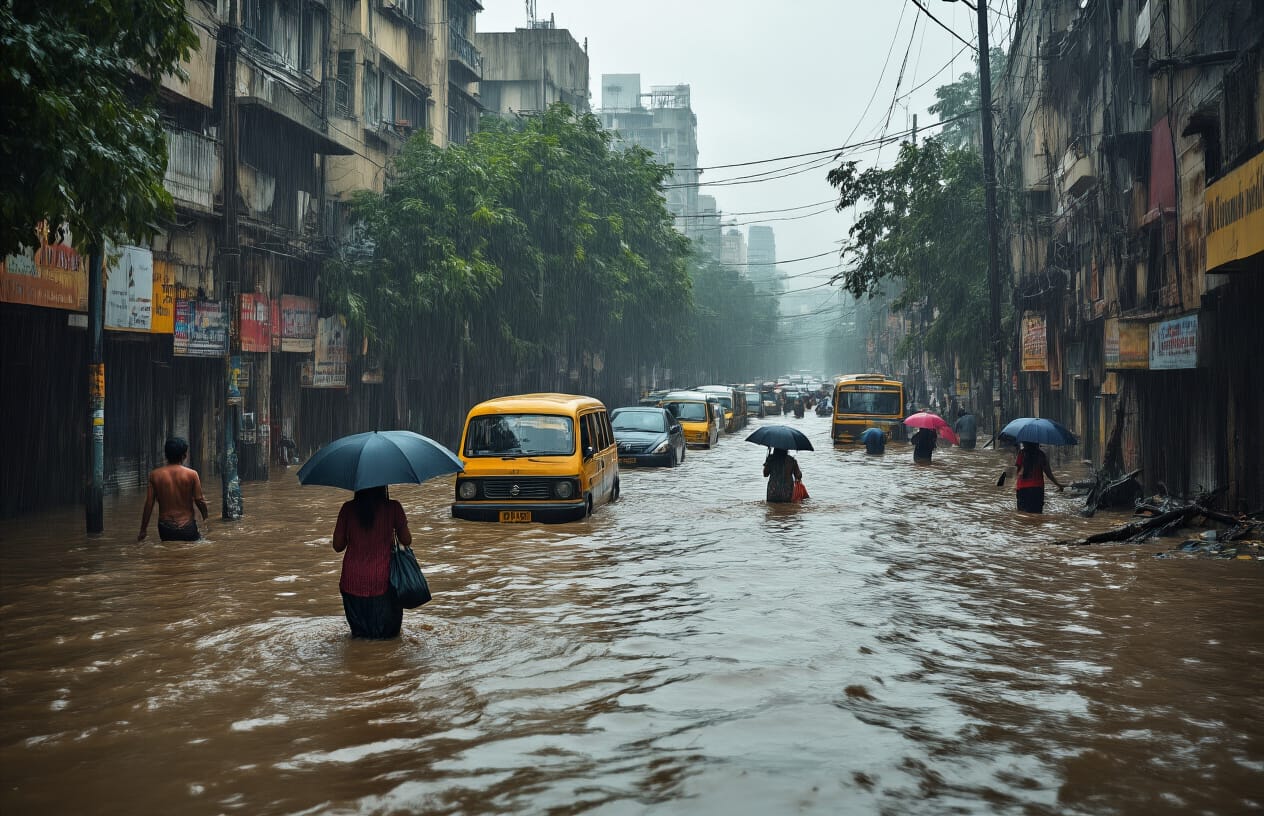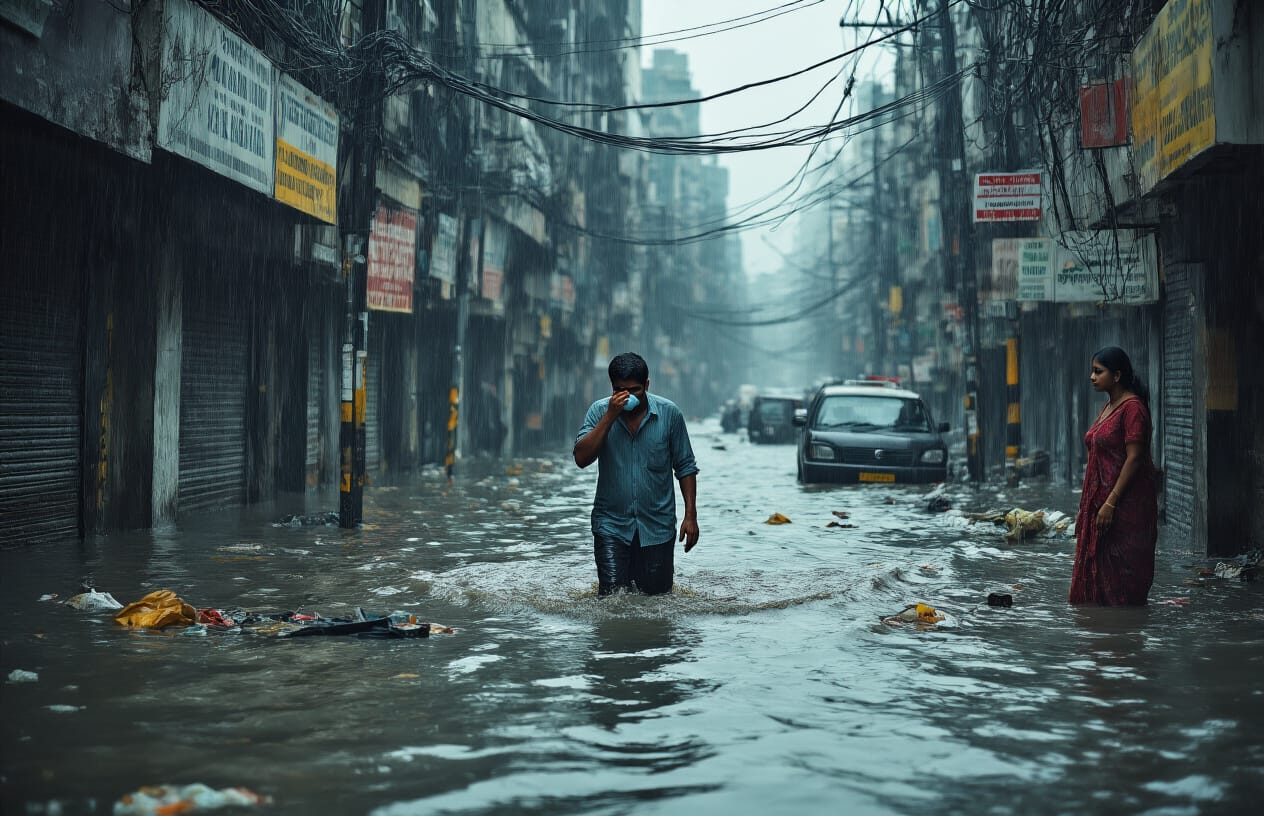
Mumbai Rainfall Alert: What 300mm in 24 Hours Actually Means
When weather alerts warn of 300mm rainfall in Mumbai over 24 hours, many residents wonder what this number actually means for their daily lives. This measurement isn’t just a weather statistic—it translates to serious flooding, transportation chaos, and potential safety risks that affect millions across the city.
We’ll break down Mumbai Rainfall Alert what 300mm of rain looks like in real terms and explore the immediate physical impacts you can expect around the city. You’ll also learn about the health and safety risks that come with extreme rainfall events, plus essential preparation strategies to keep you and your family safe during Mumbai’s heaviest downpours.
Understanding 300mm Rainfall Measurement
How meteorologists measure rainfall intensity
Meteorologists employ sophisticated measurement techniques to accurately track rainfall intensity during extreme rainfall alert situations. The measurement process involves rain gauges positioned strategically across urban areas like Mumbai to capture precipitation data. When forecasters issue warnings about 300mm of rainfall in 24 hours, they’re referring to measurements collected from these standardized instruments that calculate the depth of water accumulated over a specific time period.
The intensity measurement becomes particularly crucial when multiple weather systems align simultaneously, as observed during Mumbai’s recent extreme weather events. The alignment of low-pressure areas over Vidarbha, cyclonic circulation over the Northeast Arabian Sea, depression over the Bay of Bengal, and an active offshore Monsoon trough creates conditions that meteorologists closely monitor through continuous rainfall measurements.
Comparing 300mm to average Mumbai monsoon levels
To understand the severity of 300mm rainfall in 24 hours, it’s essential to compare this figure against Mumbai’s typical monsoon patterns. The city’s monthly average rainfall stands at 560.8mm during peak monsoon season. When Mumbai experienced over 800mm of rainfall by August 19 in recent extreme weather events, it dramatically surpassed this monthly average in just a matter of days.
This comparison reveals that 300mm in a single day represents more than half of what the city typically receives throughout an entire month. Such intense precipitation events have become increasingly common, with climate change acting like a “steroid” that intensifies extreme rainfall events. The northward swing of monsoon winds pulls massive moisture from the warm Arabian Sea, contributing to these unprecedented rainfall levels.
Converting measurements to relatable terms
Converting 300mm rainfall measurements into relatable terms helps residents better understand the scale of extreme weather events. This measurement translates to approximately 12 inches of rainfall concentrated within 24 hours, equivalent to having a foot-deep layer of water covering the ground if drainage were completely blocked.
Research indicates that Middle East warming significantly influences summer rainfall patterns over northwest India, with studies showing that 46% of increased rainfall in the region between 1979 and 2022 can be attributed to rapid warming. This scientific understanding helps explain why shorter, more intense rainfall events have become the new normal, matching predictions for weather patterns in a warming world. These measurements serve as critical indicators for issuing timely rains warnings and implementing emergency response measures. (Source)
Immediate Physical Impact of Heavy Rainfall

Immediate Physical Impact of Heavy Rainfall
Street flooding and drainage system overload
When Mumbai receives extreme rainfall alert conditions, the city’s streets transform into waterlogged channels within hours. The torrential rain overwhelms the existing drainage infrastructure, causing streets to turn into rivulets as witnessed during recent consecutive days of heavy precipitation. This transformation occurs rapidly, with roads becoming impassable waterways that disrupt the daily routines of Mumbai’s 12 million residents. The drainage system, already operating at capacity during normal monsoon conditions, simply cannot cope with the volume of water during intense rainfall events, leading to widespread street flooding across both the main city and suburban areas.
Transportation disruptions across the city
The impact of Mumbai Rainfall Alert Mumbai’s transportation network is immediate and severe. Vehicles become submerged in floodwater, creating hazardous conditions for commuters and effectively bringing the city’s mobility to a standstill. This submersion of vehicles has become a routine occurrence during intense rainfall periods, highlighting the vulnerability of Mumbai’s transportation infrastructure. Public transport systems, including buses and local trains, face significant operational challenges as waterlogged tracks and roads make travel dangerous and often impossible.
Power outages and infrastructure damage
The incessant nature of heavy rainfall, particularly when it persists for four consecutive days, places enormous strain on the city’s electrical infrastructure. Power distribution networks become vulnerable to water damage, while the combination of flooding and strong winds during torrential rain events can damage power lines and electrical equipment across residential and commercial areas.
Effects on residential and commercial buildings
Buildings throughout Mumbai experience direct impacts from sustained heavy rainfall. The continuous battering of structures by incessant rains affects both residential complexes and commercial establishments, with water infiltration and structural stress becoming primary concerns for property owners across the city’s extensive urban landscape.
Health and Safety Risks During Extreme Rainfall
Health and Safety Risks During Extreme Rainfall
Now that we have examined the physical implications of 300mm rainfall, it’s crucial to understand the serious health and safety threats that accompany such extreme weather events in Mumbai. These risks multiply significantly during intense precipitation, creating a cascade of dangers that affect residents across the city.
Waterborne Diseases and Contamination Threats
When Mumbai experiences extreme rainfall alerts, the risk of waterborne diseases escalates dramatically. Flooding causes sewage systems to overflow, mixing contaminated water with stagnant pools throughout the city. This contaminated water becomes a breeding ground for disease-carrying vectors and pathogens.
Residents face increased exposure to cholera, typhoid, hepatitis A, and gastroenteritis during heavy rains in Mumbai. Children and elderly individuals are particularly vulnerable to these waterborne illnesses. The mixing of drinking water sources with floodwater creates additional contamination risks, making even treated water potentially unsafe for consumption.
Standing water from extreme rainfall also promotes mosquito breeding, increasing the risk of vector-borne diseases like dengue, malaria, and chikungunya. These health threats can persist for weeks after the initial flooding subsides.
Traffic Accidents and Pedestrian Safety Concerns
Extreme rainfall in Mumbai transforms roads into hazardous zones with significantly reduced visibility and compromised surface conditions. Waterlogged streets make it difficult for drivers to judge road depth, leading to vehicles getting stranded or damaged.
The combination of slippery surfaces, poor visibility, and desperate attempts to navigate flooded areas results in increased collision rates. Pedestrians face heightened risks as they struggle to identify safe walking paths, often forced to wade through contaminated floodwater where manholes and drainage covers may be displaced or missing.
Emergency services experience delays in response times during extreme rainfall alerts, meaning accident victims may wait longer for medical assistance. The chaos of traffic diversions and road closures further complicates emergency response efforts.
Building Collapse and Structural Hazards
Mumbai Rainfall Alert poses serious structural risks to Mumbai’s buildings, particularly older constructions and those with compromised foundations. Prolonged exposure to heavy rains can weaken building materials, causing walls to develop cracks or foundations to shift.
Water infiltration during intense rainfall can compromise electrical systems, creating electrocution hazards for residents. Poorly maintained buildings face increased risks of partial or complete collapse, especially in densely populated areas where construction quality may be substandard.
The combination of saturated soil and continuous rainfall can cause landslides in hilly areas of Mumbai, threatening both residential structures and transportation infrastructure. These structural hazards often develop gradually, making them difficult to detect until significant damage has already occurred.
You may also check this : https://trendingnowindia.in/extreme-rainfall-alert-mumbai-2025/







1 thought on “Mumbai Rainfall Alert: What 300mm in 24 Hours?”